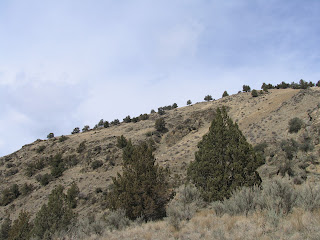When Mike, James, and I went on this trip I had never been through an entire bird season. I had shot my first bird with James the previous year but as of that point did not have any real hunting identity. I knew I was passionate about getting out into the woods but nothing had kept me up at night like so many of the stories guys tell around camp fires. Montana, Mike, and his Red Label changed all of that.
When Mike pulled his shotgun out of that truck I was
immediately floored. It was an over-under, 12 gauge with obvious battle scars
from the 30 or so years of use. The clean, smooth receiver plate gave the
entire gun character and the barrels made for both an imposing and elegant
sight. When he moved the top lever over and the gun broke the sound resonated
with me. The initial click of the action breaking, followed by a much deeper
tone as the weight of the barrels began to swing away, and finally commencing
with a heavy bass like thud as the gun was fully broken. After loading his
shells, the barrels were once again united with the receiver and stock. The
ensuing click was simply perfect. Looking at Mike and then back at the gun I
was totally fixated. I couldn’t take my eyes away and by the end of the day it
wasn’t only the gun itself that made me want it but the way it was used.
For a guy like me who was unsure of his hunting identity,
that day in Montana was a game changer and what I witnessed throughout the week
would drive me for months to come. At one point during that day, James and I were
walking out in front of Copper, Mike’s dog, and as he was pushing though the
brush a sage grouse exploded up from the grassland and flushed out behind us.
Without any real shot it was left to Mike to make the move. In all honesty, and
without exaggeration, what happened next was hands down the day I knew I wanted
to be a bird hunter and own a Red Label. With the bird flushing out away from
us Mike crouched down to one knee right until the bird was passing by him. With
nearly 40 yards between him and the bird he stood up and in one shot I saw the
grouse buckle and fall to the ground. Making a quick attempt to fly off again,
Copper came in to grab the bird and it was over. The grouse had fallen and
Mike’s technique was for me, the stuff of novels. As he broke his action to remove
the spent shell it all came together. How I wish I had a picture of that
moment. How I wanted to be a bird hunter.
We would end up hunting for much of the week and I was
witness to the beauty of Mike’s Red Label day after day. As my interest in the
firearm grew he would tell me of its reliability and how that gun had been
slung and dragged though more duck blinds than there are miles on my truck. He
had gotten the gun in his twenties and it was still his go to shotgun. That was
saying something.
Also, beyond what happened in Montana that week, simply the
name, Ruger, spoke to me. I know that personally, and as I am sure many other
Americans feel, owning an American made gun is something to be proud of. Having
a New England city stamped on the receiver really means something and at this
point, the pieces were coming together perfectly in my mind. I knew I wanted to
be holding an over-under shotgun. I knew I wanted to be holding a piece of
American craftsmanship.
And so the weeks began to pass and with Ruger’s Red Label
page saved on my computer, my searching was incessant. Each night I would
search for pictures, YouTube videos, and gravitate towards reviews far and wide.
The following for Red Label’s was strong, people almost obsessed with their
guns, their reliability, and what could be done with them. But there were those
that thought the gun too heavy, made poorly, and too expensive. Voices from all
around were screaming out in every direction but in the end, I knew I wanted a
Red Label. Mike’s endorsement was all I needed and while it would take a
serious commitment to save up the money needed, I was ready, and willing.
Until the day I can hold one again in my hands the attempt
to save money continues. Tonight, just like every other night, I will open the
Red Label page and view it with a smile on my face as I head to bed. My search
will continue, my resolve will not be shaken, and after this past hunting
season if there is any single, undeniable fact, it’s that I am a bird hunter
and that is my passion. That is my identity, and when I finally do save enough
for that gun; it will be a great day. It will be the day I get one step closer
towards becoming the bird hunter I saw that morning.























